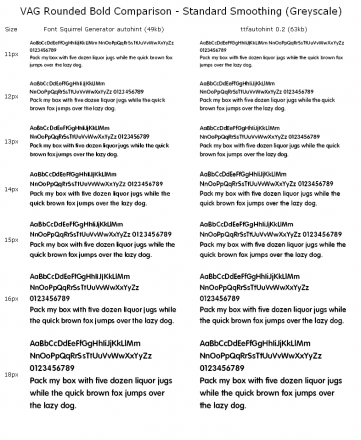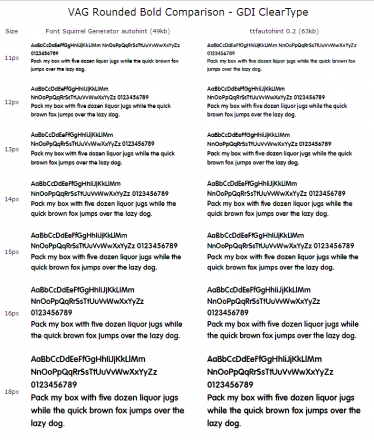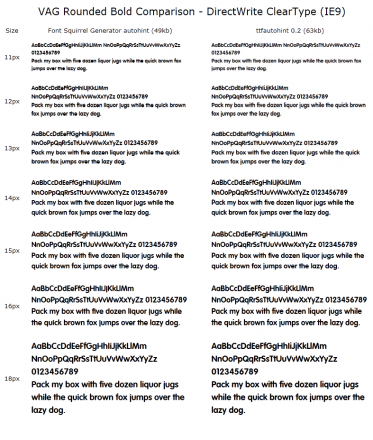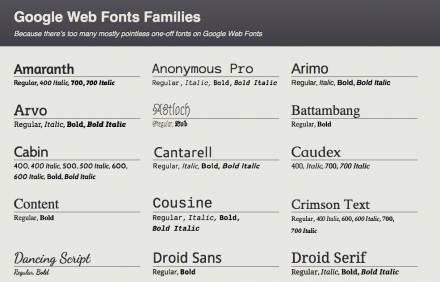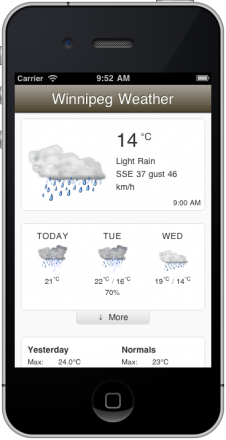In a stroke of genius, Werner Lemberg has started the ttfautohint project, which repurposes FreeType’s autohinting system to automatically hint TrueType fonts for improved Windows rendering. While no autohinter will be able to match the eye and skills of a manual hinter, ttfautohint provides real world improvements, sometimes dramatically.
For example, I’m working as a contractor on a project using the classic VAG Rounded font. 13px bold looks great in Photoshop comps and Mac browsers, but fails horribly under Windows. I decided to run VAG Rounded Bold through ttfautohint 0.2 to see if it would offer improvements. In short: wow. In the screenshots below, ttfautohint goes head-to-head with the Fontsquirrel generator’s autohinting (which I believe is powered by FontForge).
Rendering modes are shown in the captions. Click for full size. (I’m restricted to screenshots because the font is only licensed for the client site.)
As you can see, there’s a dramatic improvement in all 3 Windows rendering environments. 11px-13px sizes move from awful, with completely closed counters, to suprisingly readable. At 14px, the counters open up with standard hinting, but closer inspection reveals other defects such as no separation between the body and dot of the i and j characters. The improvements are even more dramatic under Standard (grayscale) antialiasing, which looks terrible below 18px. Even under DirectWrite ClearType, ttfautohint produces superior results (although a true test would also provide a completely unhinted version to see what the DirectWrite rasterizer is capable of on its own).
The only real downside is a modest file size increase. I haven’t tested across multiple fonts, but in this case our font jumped from 49kb to 63kb. I consider it an excellent trade-off for such improved rendering.
So, you want to use it? Well, first you should support the project. Currently you need to compile ttfautohint, but with our support, Werner will build a GUI version for the command line-phobic. If you’re on a Mac and want to compile, I put together an installation script.
Edit: In an email exchange, Werner pointed out that Dave Crossland—who has done much of the ttfautohint promotion—had the actual idea to use FreeType for hinting, although Werner still deserves massive praise for the execution. Werner also pointed out that VAG Rounded is a good showcase font, and that ttfautohint will not perform such striking results in all circumstances.
